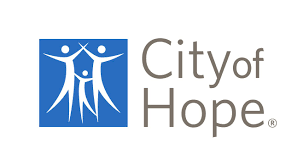
- August 2021
- Volume 15
- Issue 4
The Evolving Role of the APRN in Oncology Care

The APRN position has an important, albeit recent, history.
The role of the advanced practice registered nurse (APRN) has evolved over the past 4 decades, originating in Canada and the United States.1 The International Council of Nurses helped to define and guide the structure of the role of the advanced practice nurse throughout the rest of the world. Advanced practice roles such as APRNs are formally defined through educational preparation, scope of practice, and regulatory mechanisms.2 Advanced practice providers contribute to the overall experience and delivery of the highest-quality care through every stage of the patient’s health care journey.
It is no secret that APRNs are instrumental in the care of patients with cancer and the advancement of oncology practice. They support the treatment plan and manage the patient’s disease process. Moreover, APRNs’ continual education fosters an ever-learning environment and sustains professional development. APRNs utilize evidence-based practices and research to facilitate the best patient outcomes and service.
“The role of the advanced practice provider in radiation oncology encompasses a collaboration of care between the patient, family, and physician,” said Lori VanHorn, ANP-BC, APNP, MSN, RN, a nurse practitioner at Cancer Treatment Centers of America, Chicago, in Illinois. “This care continuum is benefited by the APRN who provides a detailed assessment, symptom management, and supportive attention though specialty expertise. The continuity of care provided to patient and family further allows for a positive treatment experience while imparting a dedicated team environment.”
Studies have demonstrated that patients who receive care from APRNs are more satisfied with their experience.3 Furthermore, as the number of cancer survivors continues to grow, advanced practice providers will continue to evolve as an integral component of the oncology practice, ensuring access to quality care.4
As long as patients continue to receive cancer diagnoses, it is imperative to ensure that there are APRNs available to support optimal treatment plans.
“It is of the upmost importance to continue to have APRNs dedicated to the treatment and care of the [patients with cancer],” said Yolanda Coleman, PhD, MS, RN, FACHE, NEA-BC, chief nursing officer at Cancer Treatment Centers of America, Chicago. “We will continue to need the expertise and advocacy of the APRNs who commit their service to our patients, families, and communities.”
Timeline
1965 – University of Colorado develops first nurse practitioner (NP) program.5
1975 – More than 65 NP programs are available within the United States
1974 – The Council of Primary Care Nurse Practitioners is created by the American Nurses Association (ANA). The council helps to legitimatize the position.
1983 – The US has between 22,000 and 24,000 NPs.
1985 – American Academy of Nurse Practitioners (AANP) is created.
1992 – AANP collaborates with international nursing associations, including the Royal College of Nursing in the United Kingdom, to establish the role across the globe.
2005 – Oncology Nursing Certificate Corporation offers 2 role-specific advanced certification examinations: Advanced OncologyCertified Nurse Practitioner and Advanced Oncology Certified Clinical Nurse Specialist.6
2017 – More than 80% of oncology practices employ advanced practice providers (APPs).7
2018 – There are 5350 oncology APPs in the US.
2021 – There are more than 325,000 NPs in the US.
References
- Schneider F, Kempfer SS, Backes VMS. Training of advanced practice nurses in oncology for the best care: a systematic review. Rev Esc Enferm USP. 2021;55:e03700. doi:10.1590/S1980-220X2019043403700
- Definition and characteristics of the role. NP/APN Network. Accessed July 19, 2021. https://international.aanp.org/practice/apnroles
- Swan M, Ferguson S, Change A, Larson E, Smaldone A. Quality of primary care by advanced practice nurses: a systematic review. Int J Qual Health Care. 2015;27(5):396-404. doi:10.1093/intqhc/mzv054
- Bruinooge SS, Pickard TA, Vogel W, Amy Hanley, Caroline Schenkel, Elizabeth Garrett-Mayer, Eric Tetzlaff, Margaret Rosenzweig, Heather Hylton, Shannon N. Westin, Noël Smith, Conor Lynch, Michael P. Kosty, and Stephanie F. Williamset al. U
nderstanding the role of advanced practice providers in oncology in the United States . Oncol Nurs Forum. 2018;45(6):786-800. doi:10.1188/18.ONF.786-800 - Coombs LA, Hunt L, Cataldo J. A scoping review of the nurse practitioner workforce in oncology. Cancer Med.2016;5(8):1908-1916. doi:10.1002/cam4.769
- History of ONCC. Oncology Nursing Certification Corporation. Accessed July 19, 2021. https://www.oncc.org/history
- First large-scale survey of advanced practice providers in oncology shows growing role for nurse practitioners and physician assistants. The ASCO Post. August 23, 2018. Accessed July 19, 2021. https://ascopost.com/News/59197
Articles in this issue
over 4 years ago
Number of Health Care Jobs Still Down From End of 2020over 4 years ago
Oncology Nurses Are Champions Every Dayover 4 years ago
Continuing Education: August 2021Newsletter
Knowledge is power. Don’t miss the most recent breakthroughs in cancer care.




















































































